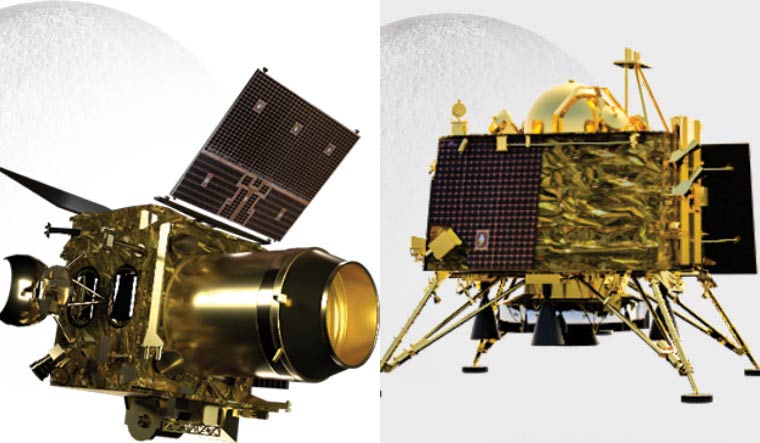On Tuesday morning, as most office-goers reach their work destination, Chandrayaan-2 will also be doing the same. Between 8.30am and 9.30am (IST), the lunar probe launched by the Indian Space Research Organisation (ISRO) on July 22, will enter into a selenocentric orbit. (Selene, for those who have a sense of mythology, was the goddess of the moon in Greek mythology). Simply put, Chandrayaan-2 will enter the moon's orbit on Tuesday.
This is an important event for the Chandrayaan-2 mission, as it marks the beginning of the penultimate phase of the journey. Chandrayaan-2 has the ultimate objective of landing a probe (lander named Vikram and rover named Pragyan) on the lunar surface, very close to the moon's south pole.
Entering the moon's orbit is known as Lunar Orbit Injection (LOI). It will be managed with the spacecraft firing its on-board liquid engines to steer it into the right course. The manoeuvre is an exacting one, because the spacecraft needs to be put into the right position in orbit for the next manoeuvres to be done right. However, since ISRO had succeeded with an LOI for Chandrayaan-1, too, this is a tested technology.
Over the course of the next few days, the probe will be fitted into its ultimate orbit around the moon, in which the orbiter will stay to conduct experiments for its mission life of one year. The ultimate orbit will be achieved by four orbit manoeuvres in the lunar bound phase (LBN) on August 21, 28 and 30 and September 1. These manoeuvres will reduce the orbit of the spacecraft around the moon from 118 x 18,078km (which will be orbit at the time of LOI) to 114 x 128km.
also read
- PSLV-C60 POEM-4: Pioneering space research with cutting-edge payloads from ISRO, startups, and universities
- ISRO to launch Europe's Proba-3 mission on Dec 3; how will it benefit India?
- ISRO chairman: Space-tech startups to enhance India's global presence in near future
- Space medicine? Here is why ISRO is focusing on microgravity for medical research
- Video | Space X Falcon 9 launches ISRO's mammoth communication satellite GSAT-20 to orbit
On September 2, Vikram will finally separate from the orbiter. While the orbiter will continue to revolve around the moon, Vikram will undertake two further orbit manoeuvres, before it begins a powered descent into the lunar surface. This is the bit of technology that is totally new (though it has been tested several times in simulated conditions). The landing is scheduled for September 7. If all goes well, India will be the fourth nation—after the US, Russia and China—to have a successful soft landing on the moon.
Vikram and Pragyan are expected to be in action for the next fortnight (one lunar day), as the moon faces the sun and powers their batteries as they conduct a slew of experiments, ranging from understanding the moon's landscape to sniffing around for water to analysing the moon's ionosphere.



